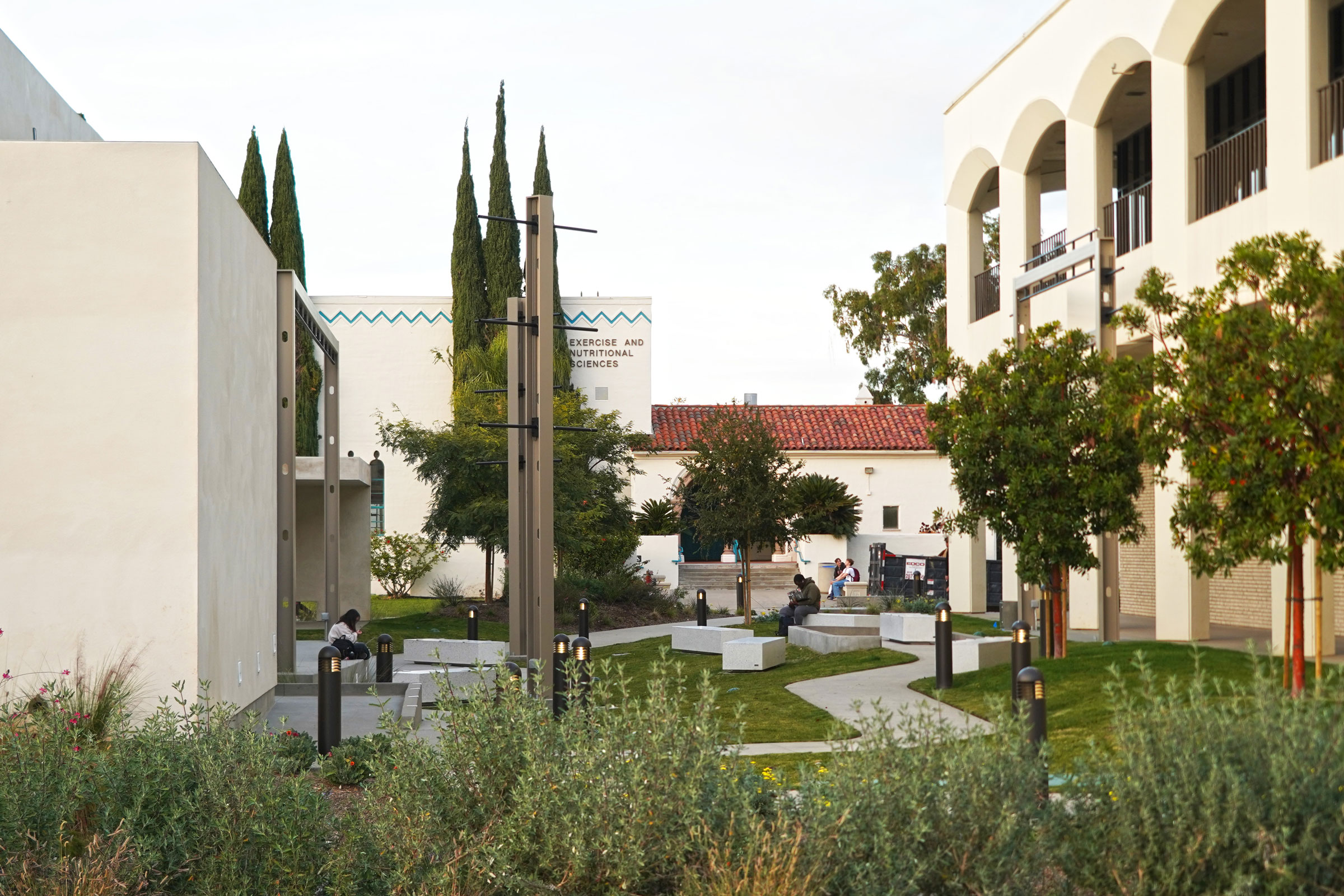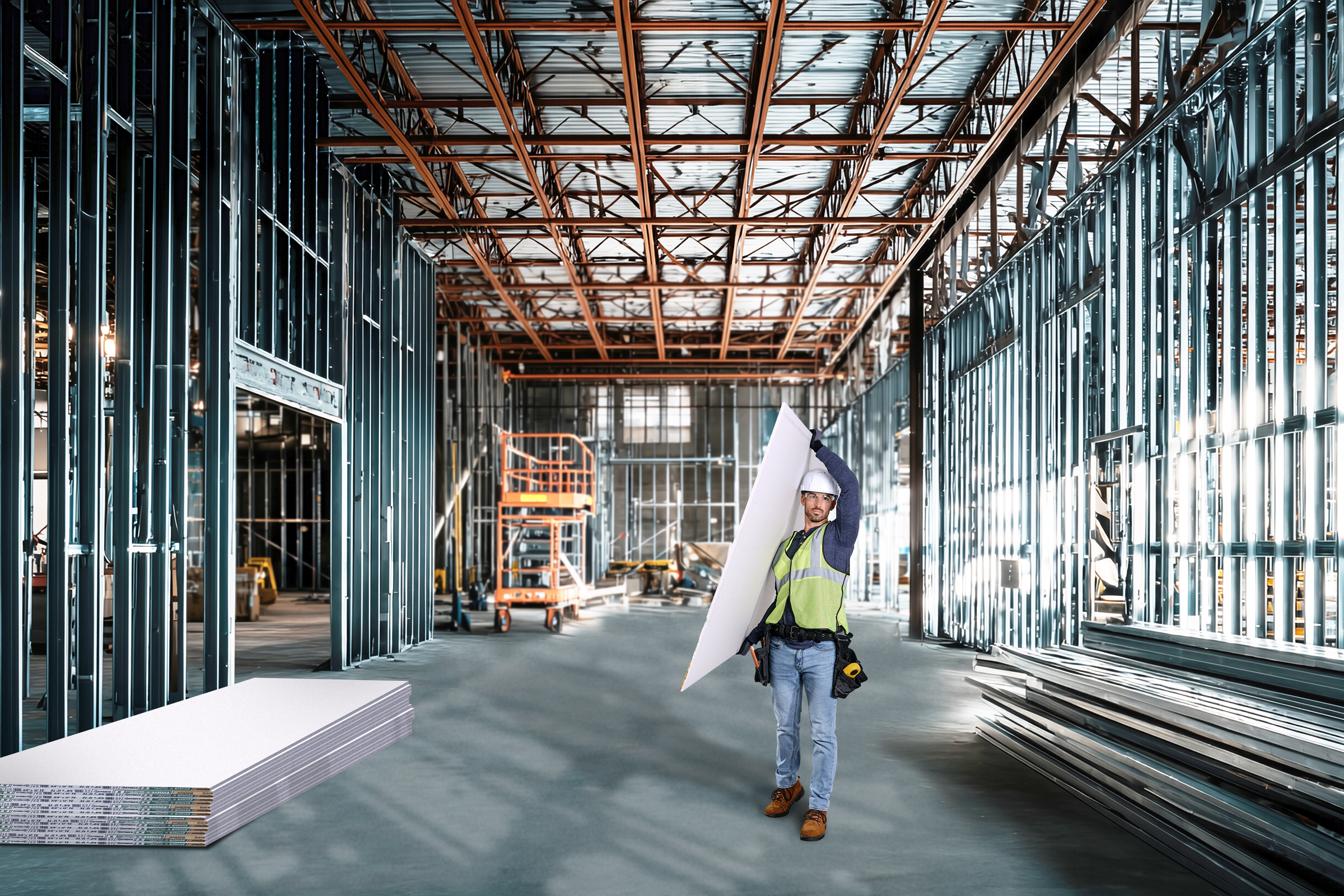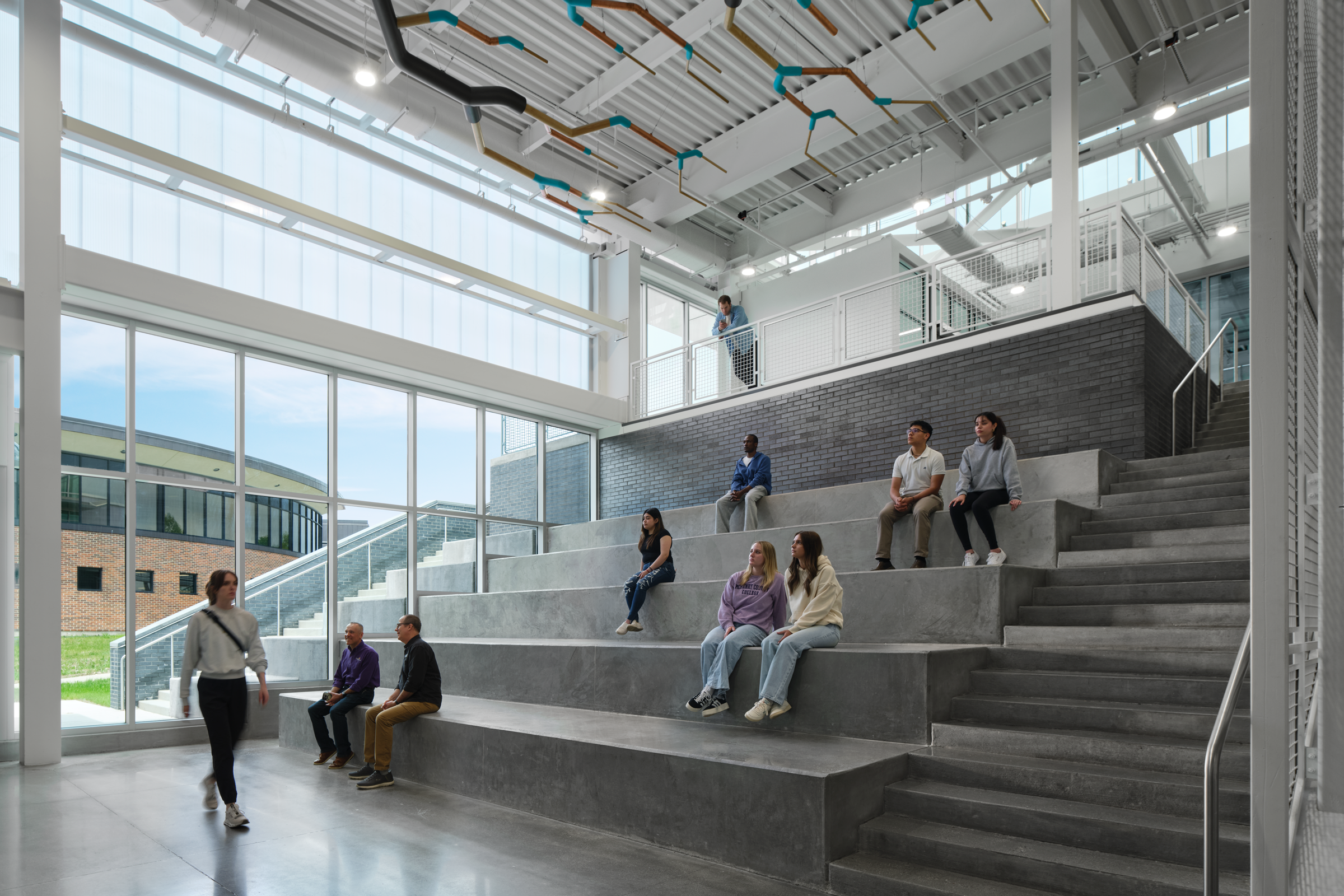Story at a glance:
- Work on San Diego campus is a microcosm for solving global challenges.
- McCullough Landscape Architecture collaborated with HGA Architects on a university theater renovation.
A climate-conscious approach to locally adapted landscape design, alongside thoughtful spatial organization of outdoor spaces, are effective means shown to mitigate the negative effects of climate change, helping to protect commercial, entertainment, and educational spaces while demonstrating the power of sustainable design. At San Diego State University’s Don Powell Theatre renovation, McCullough Landscape Architecture, working in tandem with HGA Architects, created an opportunity to address many of the environmental challenges facing the global community at a micro-scale using a sustainable approach to design.
The Backdrop: A Rapidly Changing Planet
According to the World Economic Forum, a staggering 80% of global wastewater is released back into the environment without proper treatment, leading to contamination of rivers, lakes, and oceans. We also experience a global loss of more than 16 million acres of forests annually—affecting biodiversity, carbon sequestration, and climate regulation, according to the World Wildlife Fund. Facts like these illustrate the necessity of landscape architects to act as environmental stewards responsible for embedding the principles of sustainability in every facet of their work.
With these facts in mind sustainability should not become a superficial buzzword, but an essential commitment that every landscape architecture project strives for to preserve our planet and its natural resources for future generations. By adopting a critical approach to sustainable practices, we stand to make an immediate and lasting impact on the reduction of pollution and protection of habitats to ensure a healthy balance between environmental, economic, and social needs.
A Design Partnership Rooted in Sustainability
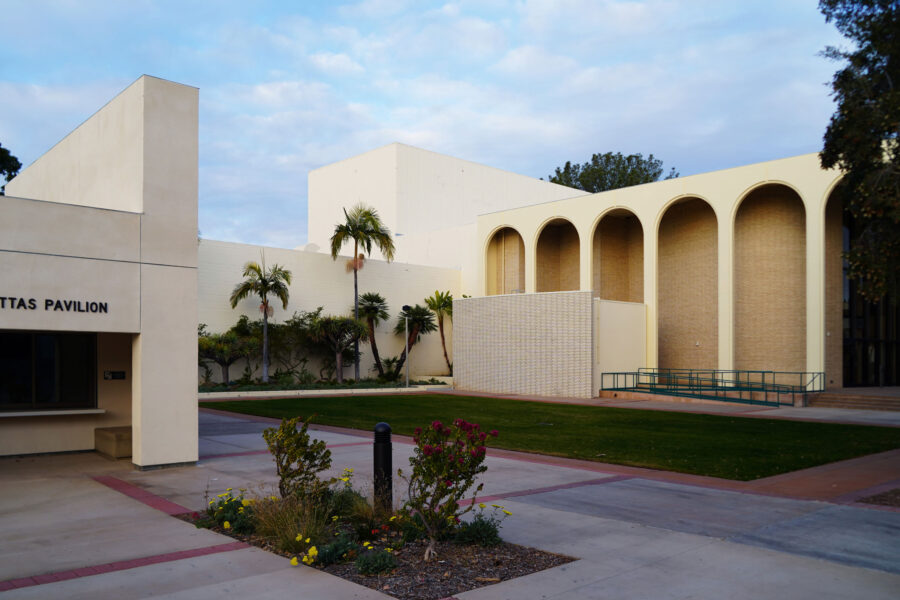
Photo by David McCullough
McCullough was invited to join multidisciplinary firm HGA as part of the renovation of the Don Powell Theatre and addition of a new Second Stage performance building for students at San Diego State University (SDSU). The outdoor spaces surrounding the theater were designed with a focus on biodiversity and four important areas of sustainable development: reducing urban heat island effects, increasing carbon storage, conserving water, and beautifying green infrastructure, also known as low-impact development (LID).
Reducing Urban Heat Island Effects
Reducing urban heat island effects can help lower ambient temperatures, which in turn reduces the demand for electricity and lowers greenhouse gas emissions from power generation. Trees, green spaces, and living vegetation all play a pivotal role in shading surfaces, deflecting radiation, and releasing moisture into the atmosphere, improving overall environmental well-being.
Both SDSU projects made use of large canopy tree species, including Tipuana Tipu and Chinese Elms, to help ensure vegetation protected buildings and pavement areas from direct solar exposure. Recreational lawn and large areas of drought-tolerant plants like sages, deer grass, and yarrow were also used to minimize hardscape that would contribute to the absorption and radiation of excess heat.
Increasing Carbon Storage
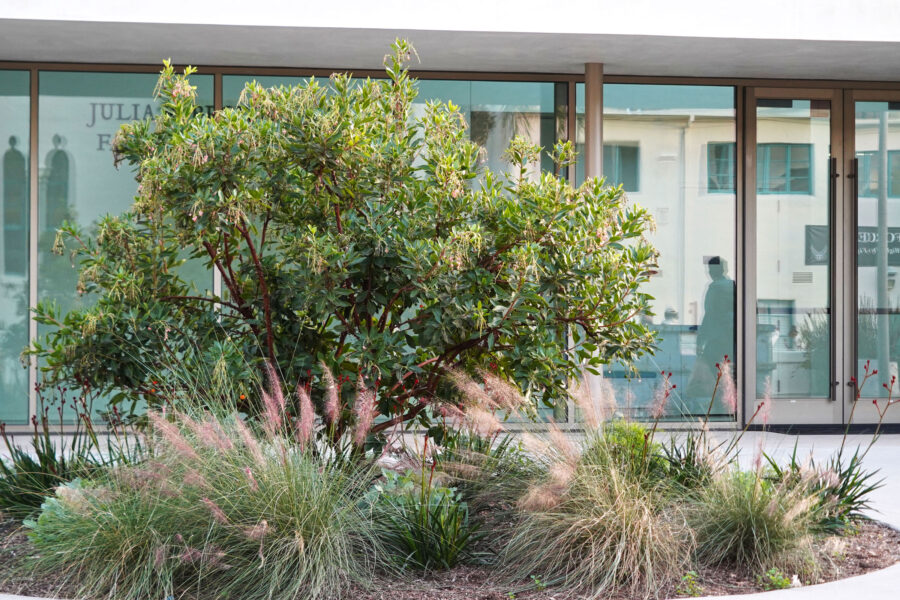
Photo by David McCullough
Increasing carbon storage helps to sequester excessive carbon dioxide emissions. To support this process McCullough’s design ensured a dense layer of mulch was used to provide organic material that, upon decomposition, would feed the soil microbiome and “grow” soil to increase its carbon sequestration capabilities.
By storing carbon dioxide the SDSU project helped to localize stabilization practices that assist in further reducing the harmful effects of carbon release. Additionally, we intentionally opted for peat-free amendments, as peatlands store more carbon than all other vegetation types in the world combined. By leaving peatlands alone they can continue to perform their essential function of storing carbon, which is lost as soon as they are harvested.
Conserving Water
Often called our most precious resource, water conservation is a mandatory consideration for any effective sustainability plan. Water conservation plays a critical role in supporting groundwater preservation that is vital for plants, animals, and people. Groundwater is often the sole source of tap water for daily use in some communities and foundational to many industries, including manufacturing, agriculture, and technology—not to mention the reliance of diverse ecological systems like rivers, lakes, and streams.
To minimize waste and amplify the amount of direct water plants received, the SDSU Don Powell Renovation and Second Stage project made use of low-flow drip irrigation systems, prioritizing high-efficiency spray heads to maximize water distribution efficiency while minimizing water usage, reducing overall run time by up to 35%.
Green Infrastructure or LID
Green infrastructure, also known as low-impact development (LID), plays a decisive role in mitigating the adverse effects of urbanization and climate change by restoring or supporting pre-development hydrological functions. Simply put, LID ensures natural factors and pathways are allowed to continue playing their part in protecting the natural ecosystem of an area, even after a commercial development has disrupted the native hydrological flows of a region. Distributing stormwater control and natural features that form the basis of urban stormwater management helps to minimize pollution, enhance water quality, and improves the overall well-being of local ecological systems.
The SDSU project was able to beautify the stormwater detention basins with attractive plant material, calling attention to and highlighting them as educational tools to demonstrate the attractive efficacy of LID. McCullough carefully selected plant species such as Muhly Grass and Cape Rushes that thrive in both dry and wet conditions, look beautiful year-round, and provide reliable structures to support local insects, birds, and butterflies.
The Impact
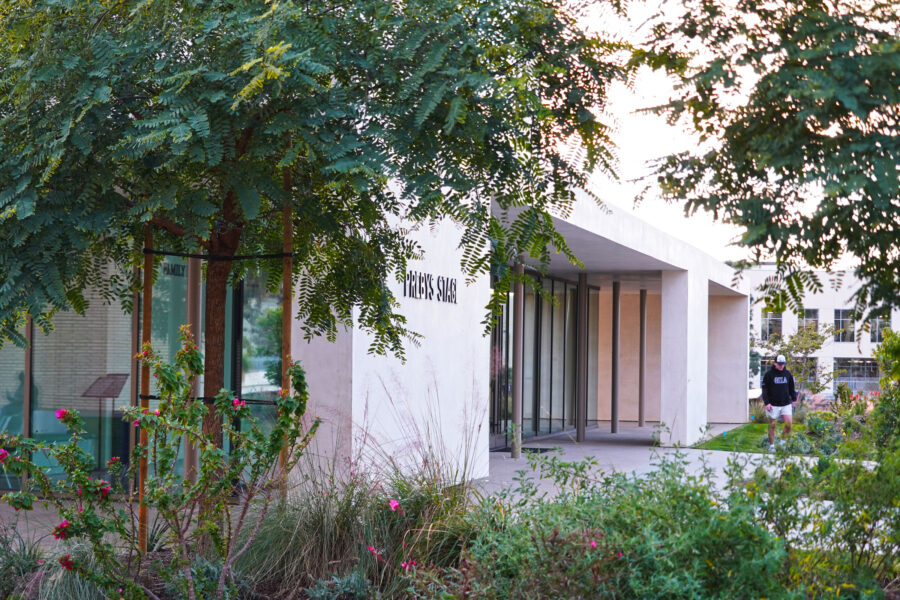
Photo by David McCullough
Climate change continues to have a very real impact, putting sustainability at the forefront of key concerns for current and future designers who stand to make a direct difference in their line of work. The World Economic Forum estimates of a potential loss of $360 billion annually to the global economy in climate-related damages, demanding collaboration and partnerships across industries to shape the future.
Alongside HGA, we endeavored to provide an inspiring and eye-catching design committed to addressing the critical challenges of reducing urban heat island effects, increasing carbon storage, water conservation, and green infrastructure in a sustainable way. The long-term global impact remains to be seen, but landscape architects are in a prime position to impart well-considered, attractive designs that serve a greater purpose—encouraging others to make small but meaningful changes toward a world that balances our human needs with those of the planet we call home.
Project Details
Project: Don Powell Theatre + Second Stage Renovation at San Diego State University
Location: San Diego
Architect: HGA
Landscape Architect: McCullough Landscape Architecture
Owner & Developer: San Diego State University
Interior Design: HGA
Brand & Environmental Graphics: HGA
General Contractor: Rudolph and Sletten
Civil Engineer: Michael Baker International
Structural Engineer: Degenkolb Engineers
Mechanical Engineer: ME Engineers
Lighting: HLB Lighting
Acoustical: McKay Conant Hoover

